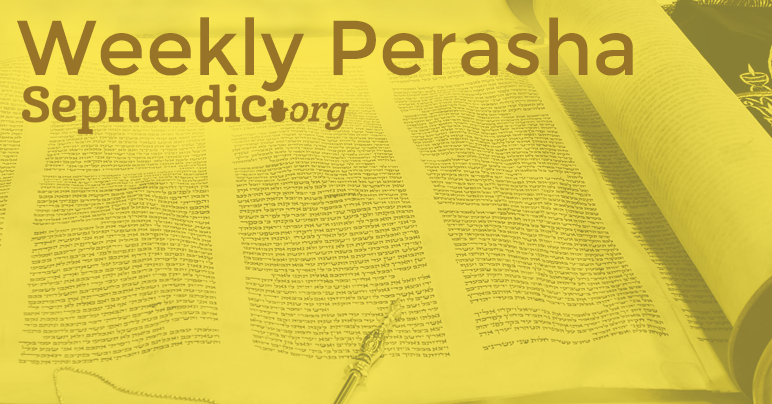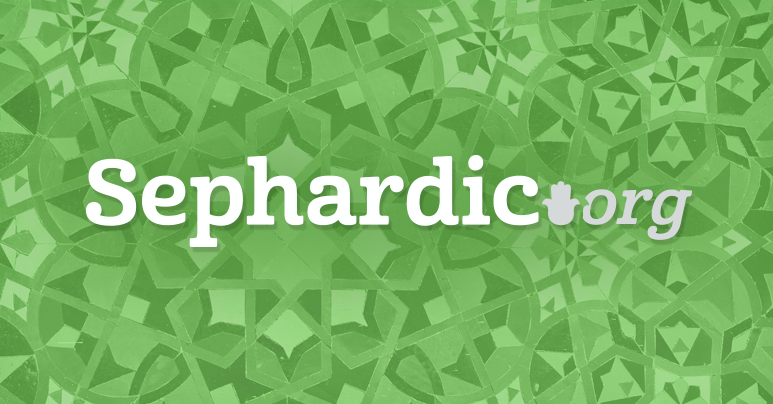
VAYISHLAH - THE DISLOCATION OF THE THIGH AND THE FLASK OF OIL
Yaaqov departs from Lavan at Gilead continuing on his journey with his family homebound towards the Land of Israel. He makes extensive preparations for his upcoming encounter with Esav including the sending of gifts ahead of his arrival. After spending the first part of the night in the camp, he arises sending his family and possessions across the Yabboq - an eastern tributary of the Jordon river. The Talmud teaches that Yaaqov (returned and) had to remain there alone putting himself in danger in order to retrieve some small flasks - Pakhim Qetanim -which he had forgotten on the northern side of the Yabboq. 1 There, he finds himself wrestling until dawn with a stranger, 2 a divine being identified as the celestial angel of Esav. 3 Desperate to get away, the Angel agrees to bless Yaaqov giving him the name Yisrael - 4 a name later affirmed by the Lord. 5 The encounter left Yaaqov with a dislocated thigh. 6 A few obvious questions must be asked. What causes him to forget these Pakhim Qetanim - small flasks? What is the nature of these Pakhim? What can we learn about the encounter with the angel and what was the nature of the struggle? What is the significance of the damage - Yaaqov suffered to his thigh? What is the relationship between the battle and the ensuing biblical instructions forbidding the Children of Israel to eat of the Gid HaNashe displaced nerve of the thigh?
YAAQOV LOSES THE BATTLE FOR HOD - HIS THIGH IS DISLOCATED
Our Sages teach that there are ten Divine channels whereby the Creator dispenses spiritual influx into the worlds. 7 The eighth is known as the channel of Hod; which in relationship to the spiritual body of man is associated with his thigh. 8 As we noted in a previous essay it appears as if the struggle between Yaaqov and the Angel of Esav was for control of the eighth channel of Hod which is associated with the blessing given by Yishaq to his son(s). 9 The angel in his attempt to spiritually wrestle the blessing away was unsuccessful but was nevertheless able to damage or disjoin the thigh of Yaaqov. In doing so the angel exposed the fact that Yaaqov was susceptible in the area associated with Hod or the eighth blessing.
THE ANGEL CONTROLS THE GID HANASHE - TEMPLE (HOD) DESTROYED
As a result the Torah forbids us, Yaaqov's descendants, to consume the Gid HaNashe the sciatic nerve located by the thigh. 10 This sinew which is controlled by the Angel of Esav is one of the 365 sinews in man. This parallels the day of Tisha Be’av - the exclusive one of 365 days of the solar year also controlled by the Angel of Esav. 11 It is thru this form of negativity of the Gid HaNashe that the eighth channel known as Hod can be taken away from Israel. As referenced in the Talmud that Hod is associated with the Bet Hamiqdash. 12 Hence as a result of loosing control of this eighth channel we have the destruction of both Temples (Hod) on that very same day of Tisha Be’av. 13
THE PAKHIM REPRESENT HOPE FOR THE FUTURE TO REGAIN THE CHANNEL OF HOD
The Pakhim Qetanim were flasks of oil that Yaaqov had used to pour on the stone that he had rested upon during his infamous dream at Bet-El of the angels ascending and descending the ladder. 14 The Satan had caused him to forget the flasks on the other side of the river through the negative forces of forgetfulness or Shikheha. 15 Namely this is transmitted via the negative power of this sinew HaNashe which means to forget. 16 Once Yaaqov returned to collect the flasks - the Angel of Esav attempted to defile them. Yaaqov however had kept them hidden and sealed through the use of certain Shemot HaQedoshim - Divine Holy names. 17 As a result of the fight with the angel, Yaaqov’s weakness had been exposed in the battle for the channel of Hod as it says Vayiga Bekaph Yerekho - The angel struck the socket of his hip. However, the outcome of the war was not sealed. The socket called Kaph having the same letters as Pakh - flask was only dislocated but still remained in tact. This is expressed in the fact that Yaaqov did retain these Pakhim in his possession saving and protecting them for his future descendants. This would be known in a later era as the Pakh Shemen - the flask of oil, 18 by which his descendents would reveal the ultimate triumph when they would gain access once again to the spiritual channel of Hod.
THE YEVANIM ATTEMPT TO TAKE CONTROL EVEN OF THE PAKHIM ATTEMPTING TO COMPLETELY WIN THE WAR BEGAN BY ANGEL OF ESAV
The Syrian-Greeks Yevanim had temporarily usurped the position of Esav and his angel as the primary antagonist of Israel during the era of the Hashmonaim. 19 Our Sages reference their ascendancy as a world power from the verse in Bereshit Vehoshekh Al Pene Tehom "They are as a force of darkness who nourish from the face of the depth." 20 The Sages here are referring to their ability to nourish from the first three holy letters Mem Nun Saddi of the five final letters called the MaNSePaKH of the hebrew alphabet. 21 The letters are found only on the tails of hebrew words and are known as Sophiot or ending letters. Their position at the end of words relates to their susceptibility for negative forces to suckle from their holiness. The three letters Mem Nun Saddi have a numerical value of 180, paralleling the years of Syrian-Greek hellenist rule. 22 What remained in contention between the Syrian-Greeks and the Jews were these final letters of Peh Khaph. This evidently is the reemergence of the battle between Yaaqov and the Angel of Esav regarding the PaKH flask and Kaph socket. Through a series of harsh decrees meted out during the reign of the King Antiochus, the Greeks had the specific intent to permanently defile the spiritual channel of Hod. This included the defilement of the jars of oil which as noted earlier are associated with the Gid Hanashe. The Yevanim entered the Hekhal; the portal through which all spiritual influx flowed to the people of Israel. It was here that the Greeks gained access to a physical manifestation of the Torah's wisdom which was the oil of the Menorah. There, they contaminated all the oils that were in the Hekhal; attempting to permanently render impotent the wisdom of the Torah and take control of the channel of Hod. This attempt to cause the Torah to be forgotten was effectuated via the negative force of the Gid Hanashe; as we noted earlier that HaNashe connotes forgetfulness.
HASHMONAIM ARE INHERENTLY CONNECTED TO THE PAKHIM.
Additionally the Gemara notes that while a horn or Qeren - was used to annoint Kings of the Davidic dynasty, a flask Pakh was used to annoint those who would ascend to the Malkhut temporarily. 23 As an expression of their service to wrestle the spiritual sparks associated with Hod back from the external force of Yavan, the Gemara assigns them the appellation of Malchut bet Hashmonaim. 24 A temporary kingdom of the Hashmonaim. Hence their ascendancy or anointment is solely associated with a Pakh Shemen - flask of oil. 25
THEY LOCATE THE OIL AND REALIGN THE SOCKET OF THE THIGH KAPH FOR ISRAEL. ALLOWING US THE GAIN CONTROL OF THE CHANNEL OF HOD
It is therefore befitting that they were the ones to search and find a single flask of oil. This Pakh according to the Talmud had the seal of the Kohen Gadol. 26 According to a Hasidic source this seal was effectuated with the Divine Attribute of Truth. 27 It is synonymous with that of Yaaqov Avinu who had retrieved the Pakh - hiding it for a time, until it would be needed to help restore the channel of Hod and the Torah to Israel. For the characteristic of remembering in defiance to forgetting the Torah is reminiscent in the finding of the pure olive oil as it says in the Talmud that this oil has the power to return the learning of seventy years. 28 This is an expression of the return of the wisdom of the Torah to it's glory and the channel of Hod from the negative clutches of the Yevanim. This Pakh flask besides containing the oil, represented the two letters Pakh that remained aloof from the Yevanim as well as the realignment of the Kaph - the socket of Yaaqov. The light it provided would last for eight days reflecting the Tiqun of the eighth spiritual channel of Hod. These were henceforth established by the Sages as days of Hallel and Hoda’ot -praise and thanks which also are a reflection of this channel. 29
Shabbat Shalom
Victor Bibi








